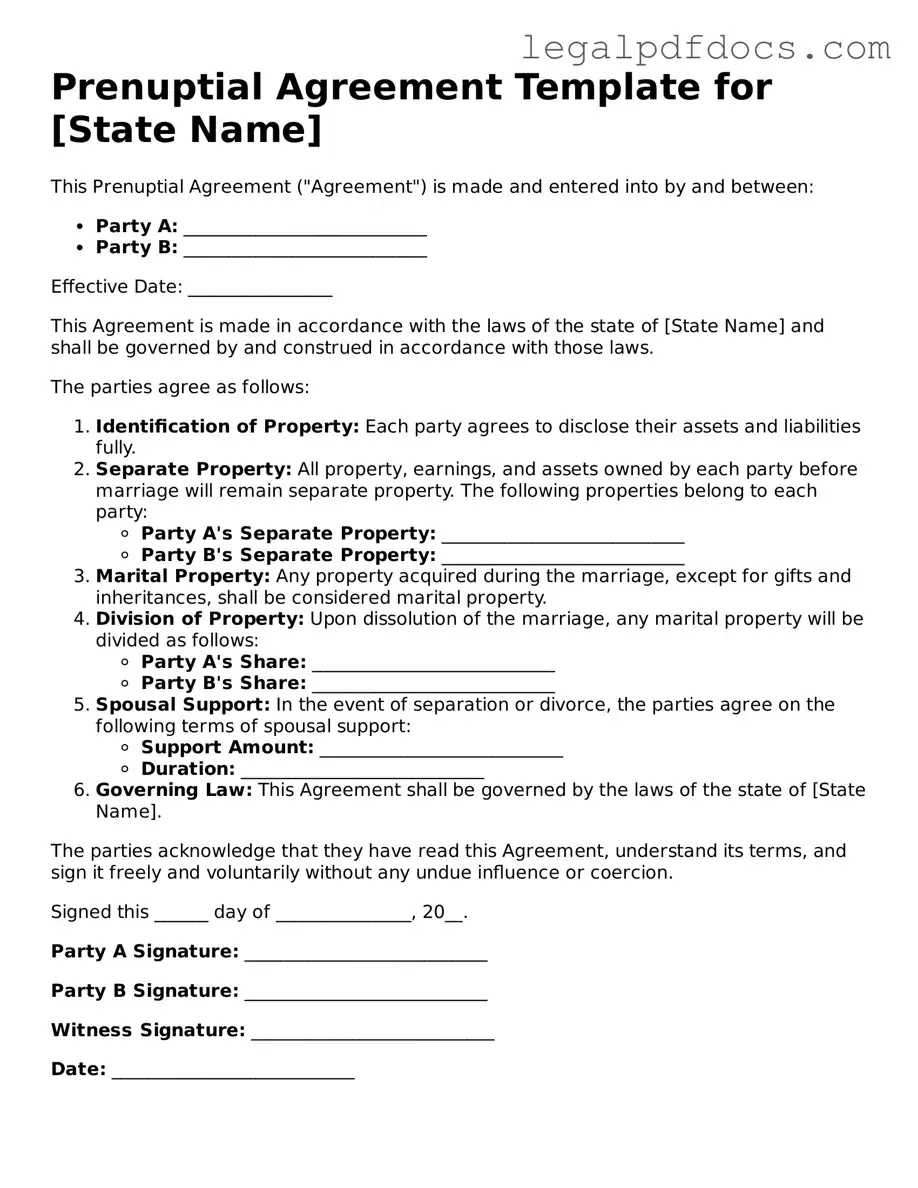Prenuptial Agreement Template
A Prenuptial Agreement is a legal document created by two individuals before they marry, outlining the division of assets and responsibilities in the event of a divorce or separation. This agreement helps both parties understand their rights and obligations, providing clarity and security for the future. To ensure your interests are protected, consider filling out the Prenuptial Agreement form by clicking the button below.
Open Prenuptial Agreement Editor Here
